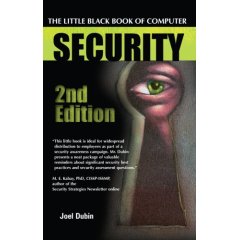Tips for Debit Card Security
Debit cards look, act, feel and work like those other plastic payment cards called credit cards. But think twice before using them in some places, according to this little blurb from CreditCards.com.
Unlike credit cards, debit cards directly access your bank or checking account. That means, if maliciously used, they could be a siphon right into your bank account.
The top ten list are the following:
1) Online
2) Big-ticket items
3) Deposit required
4) Restaurants
5) You're a new customer
6) Buy now, take delivery later
7) Recurring payments
8) Future travel
9) Gas stations and hotels
10) Checkouts or ATMs that look "off"
The last two are particularly interesting. Gas stations are particularly vulnerable to skimming operations at pumps, and ATMs that don't look right can end up unexpectedly in some popular locations.
Remember the bogus ATM planted last year at Defcon right as you went down the hall before the entrance?
Unlike credit cards, debit cards directly access your bank or checking account. That means, if maliciously used, they could be a siphon right into your bank account.
The top ten list are the following:
1) Online
2) Big-ticket items
3) Deposit required
4) Restaurants
5) You're a new customer
6) Buy now, take delivery later
7) Recurring payments
8) Future travel
9) Gas stations and hotels
10) Checkouts or ATMs that look "off"
The last two are particularly interesting. Gas stations are particularly vulnerable to skimming operations at pumps, and ATMs that don't look right can end up unexpectedly in some popular locations.
Remember the bogus ATM planted last year at Defcon right as you went down the hall before the entrance?



